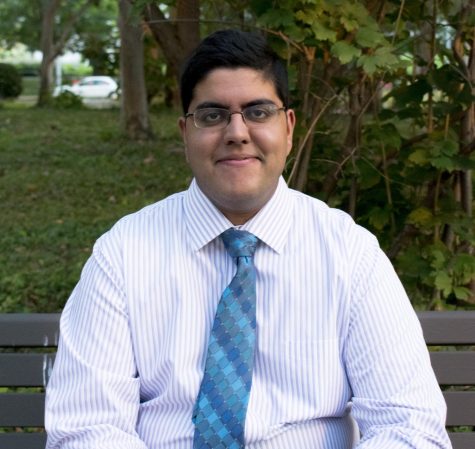Researcher finds fungus that could lead to cure for mouth infection
March 28, 2014
Dr. Mahmoud A. Ghannoum, the director of Medical Mycology at University Hospitals Case Medical Center wants to fight fire with fire. More specifically, a fungus with a fungus.
The researcher has been studying Thrush, an infection caused by the fungus Candida. Through a study involving HIV-infected patients, he was able to isolate a potential microbial that could be used as a treatment for the infection.
Ghannoum was interested in the infection because of its incidence in Human Immunodeficiency Virus-infected patients. The HIV virus attacks the immune system, reducing its ability to fight off microbial infections.
To counteract this, doctors prescribe HIV-infected patients with antibiotics. While this may help fight off infections, many “good” microbes, such as bacteria or fungi, also live in or on the human body and a certain equilibrium of these microbes is required to maintain health.
So, Ghannoum wondered if it was the lack of a certain bacteria that caused the Candida fungus to grow uncontrollably.
He obtained oral mucus samples from 24 patients at University Hospitals, 12 infected with HIV and 12 unaffected, all who had Thrush. He then used an advanced form of culturing called pyrosequencing to identify the microbes living in these patients’ oral cavities.
“We noticed that there is no difference in the bacterial community, but in the fungal community,” he said.
It turns out that antibiotics in HIV-infected patients also remove Pichia, a fungus normally found in the human body. So, Ghannoum decided to test whether the fungi affected each other’s growth.
He did this test in vitro, which means in glassware, as opposed to a living system. And his results were fairly straightforward; an inverse relationship between the two different fungi existed.
“When there is Candida, which causes Thrush in the mouth, Pichia was absent,” Ghannoum said. “When Pichia is present, Candida levels were low or absent.”
In other words, Pichia inhibited Candida’s virulence factors and its ability to adhere to tissue.
However, these results were irrelevant if they couldn’t be reproduced in a living system. So, Ghannoum went in vivo.
Using a mouse model, Ghannoum infected mice with Candida and then treated them with the liquid that the Pichia was growing in. He also treated infected mice with the current treatment of Thrush, nystatin, and a control containing no treatment.
The Pichia treatment did better than the nystatin, results that mean the researcher is hoping for Pichia to mean a new treatment for Thrush. Likely, it’s a molecule inside the Pichia that affects Candida’s growth.
“We believe it’s a protein,” he said. “So, we’re going to identify and purify the protein. Then, we’re going to see if it’s just that protein or if we need cocktail of proteins.”
On the other hand, it’s possible that Pichia itself could be used to treat patients. Ghannoum already received the grant for the work and has started the project. Looking back, he laughs at his childhood thoughts of ending up where he is currently.
Ghannoum grew up in Beirut, Lebanon, but he has worked across the globe. He went to college at the American University of Beirut, and then went to England, where he received his masters in Medicinal Chemistry and Ph.D. in Microbial Physiology.
But he didn’t know that he wanted to be a researcher at the beginning.
“As I was moving from one degree to another, I started to like it,” he said laughing. “I stayed with it.”
But, Ghannoum stresses the importance of research as a national effort. While the U.S. does spend a lot of time and effort on research, the country isn’t doing enough to counteract recent dangers such as the government shutdown.
“It is important that they put money toward research,” he said. “Without research, you don’t have any discoveries.”


